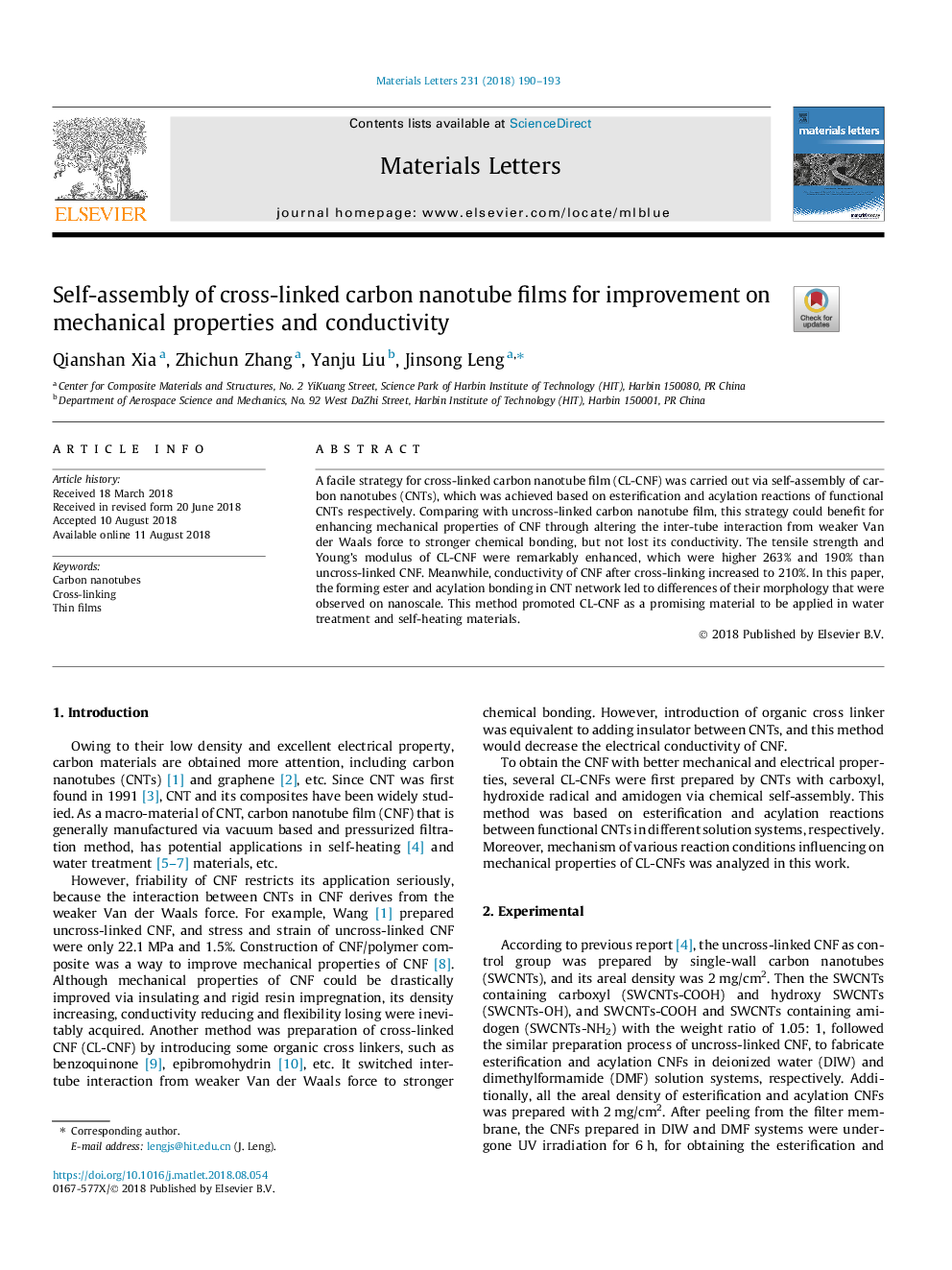| Article ID | Journal | Published Year | Pages | File Type |
|---|---|---|---|---|
| 8012344 | Materials Letters | 2018 | 4 Pages |
Abstract
A facile strategy for cross-linked carbon nanotube film (CL-CNF) was carried out via self-assembly of carbon nanotubes (CNTs), which was achieved based on esterification and acylation reactions of functional CNTs respectively. Comparing with uncross-linked carbon nanotube film, this strategy could benefit for enhancing mechanical properties of CNF through altering the inter-tube interaction from weaker Van der Waals force to stronger chemical bonding, but not lost its conductivity. The tensile strength and Young's modulus of CL-CNF were remarkably enhanced, which were higher 263% and 190% than uncross-linked CNF. Meanwhile, conductivity of CNF after cross-linking increased to 210%. In this paper, the forming ester and acylation bonding in CNT network led to differences of their morphology that were observed on nanoscale. This method promoted CL-CNF as a promising material to be applied in water treatment and self-heating materials.
Related Topics
Physical Sciences and Engineering
Materials Science
Nanotechnology
Authors
Qianshan Xia, Zhichun Zhang, Yanju Liu, Jinsong Leng,
